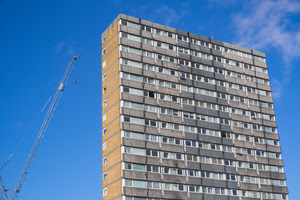WOBO appreciates the range of Health and Safety information provided, and the development opportunities that are made available to its members and fellow professionals.

Join HSM and MSA for an insightful webinar on 28 November 2023 at 10.30am, where we will discuss the key considerations for a robust fall protection program.
This webinar will provide you with an essential briefing on some of the key areas you need to consider in your fall protection program:
• The importance of fall protection in the working environment.
• An overview of the relevant legislation.
• What is the hierarchy of control?
• Who should do periodic inspections, and how should they do it?
• How to address end-user training?
• Why do we need a rescue plan?
• And more.
All attendees will receive a CPD certificate. REGISTER NOW

Proving Compliance: Testing Fire Detectors and Reporting Results – 2 November 2023 at 10.30 am-11.30 am – Register to attend
Staying Safe with Compressed Gases – 9 November 2023 at 10.30 am-11.30 am – Register to attend

Building Safety Regulator’s first charging scheme comes into effect
THE BUILDING Safety Regulator’s first charging scheme came into effect on 1 October. The scheme, which has been created under the Building Safety (Regulator’s Charges) Regulations 2023, will enable cost recovery. The latter is a key element of the Building Safety Regulator’s funding.

Mind the fire safety gap – complexity versus competence
Andrea White, Fire Engineer and Managing Director of AW Fire, told delegates that the gap between building complexity and competence in fire safety was increasing at IOSH’s Fire Risk Management Conference in September.
Highlighting what has changed regarding buildings built 50 years ago and today, she stated that: “We’re building with different materials, incorporating more combustible materials and we’re requiring higher levels of insulation.
“We have less robust building materials, which are more combustible. Historically we didn’t need to think so deeply about fire spread within, across and between buildings because we were building with non-combustible materials.”
Luton Airport car park fire causes ‘structural collapse’
A fire broke out at a terminal car park in Luton Airport on Tuesday night (10 October), causing a significant area of the car park to collapse.
Over 100 firefighters tackled the blaze at Terminal 2 car park on Tuesday night, where all flights arriving and departing the UK’s fifth largest airport were suspended.
Bedfordshire Fire & Rescue Service (BFRS) said the structure had suffered a “significant structural collapse”, with half of the car park “fully involved in the fire”.
The fire was brought under control, according to the Service, around 08:45, with reports of the fire first starting 12 hours earlier, at 20:47 on Tuesday evening (10 October).
Fire Chief Andy Hopkinson told members of the press that he wasn’t aware of any sprinklers in the car park, when asked. The fire is thought to have started with a diesel-powered vehicle “and then that fire has quickly and rapidly spread”, Hopkinson added.
The East of England Ambulance service said that six firefighters and a member of airport staff are said to have been treated for smoke inhalation.
More than 150 flights which were due to land or take off from the airport had been cancelled.
Water Hygiene Centre’s Senior Consultant and Authorising Engineer, Roy Sullivan, discusses Legionella control for architects and building engineers including the risks present in hot and cold water systems, regulation and guidance along with the principal designer responsibilities.
Water for building services isn’t entirely free from aquatic organisms; therefore, measures must be taken to guard against conditions that encourage the growth of water-borne pathogens such as Legionella.
To avoid potentially costly remedial works, the design of new buildings and their water systems should be controlled to ‘get it right the first time’, essentially to ‘design out’ risk, which in turn will lead to a safer water system having had the correct design, installation, commissioning, maintenance and operation.
